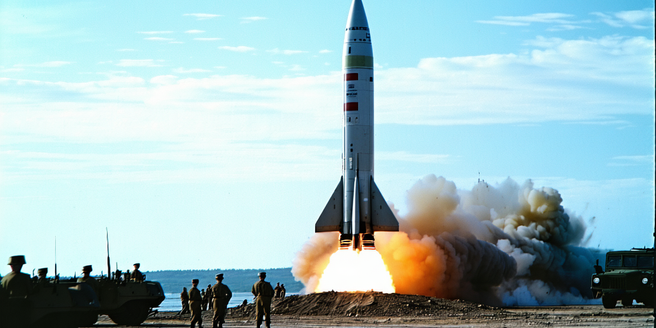
Ai’s Contribution To Mental Health
Artificial Intelligence (AI) is increasingly crucial in mental health support by providing personalized therapy sessions and monitoring patient moods through apps and online platforms. AI tools use natural language processing and machine learning to analyze data for anxiety or depression signs, enabling timely intervention and 24/7 support. They enhance accessibility and affordability in mental health care. Machine learning transforms therapy approaches by offering data-driven insights, tailoring interventions, and improving therapy efficacy. AI technology aids in early detection of mental health issues by analyzing user interactions and predicting mental health risks, enhancing prevention and treatment access. Chatbots offer scalable and immediate support, although they lack the nuanced empathy of human counselors, serving as valuable tools for initial counseling. Real-world AI applications, like Woebot, demonstrate comparable efficacy to traditional therapy for managing mild anxiety and depression symptoms, showcasing AI’s potential in mental health care.

Space Exploration Technology
The evolution of rocketry and space vehicles from military uses during World War II to present-day innovations like the reusable SpaceX Falcon 9 rocket has revolutionized scientific exploration and space travel. The launch of Sputnik in 1957 marked a significant milestone, initiating an era of space exploration that has led to international collaboration as seen with the International Space Station and missions focused on the Moon and Mars. Simultaneously, satellite technology has transformed communication, navigation, and earth observation, with advancements like Cubesats and improved propulsion systems enhancing functionality and global connectivity. AI and robotics play a crucial role in modern space missions by processing data and assisting with tasks beyond human capability, such as Mars rover navigation and robotic assistance on the ISS. Space exploration has also spurred technological innovation on Earth, contributing to developments like GPS, MRI machines, and sustainable energy solutions with solar panels. Future prospects for human settlements in space are under exploration, with Moon and Mars bases being planned, although challenges like radiation exposure and resource management remain. This drive towards space settlement is inspired by issues like overpopulation, promising solutions beyond Earth through collaborative efforts and technological advancements.

Cryptocurrency And Digital Assets
Cryptocurrency is a digital currency utilizing cryptography for secure transactions, distinct from government-backed currencies due to its decentralization and use of blockchain technology. Blockchain acts as a secure, transparent ledger for transactions, enhancing trust in the management of digital assets like cryptocurrencies. The rise of cryptocurrencies has significantly impacted global markets, presenting new investment opportunities and challenging conventional financial systems. However, while cryptocurrencies promote transparency, they also raise concerns about privacy and security. Future trends in digital assets revolve around decentralized finance and the growing interest in non-fungible tokens, as well as the exploration of central bank digital currencies for broader adoption.

Reducing Operational Costs With Tech
Reducing operational costs through technology begins with identifying resource-intensive processes, often found in logistics, supply chain management, and manpower utilization. Conducting audits and using data analysis tools can pinpoint inefficiencies, which can be improved via automation and workflow optimization. Automation streamlines repetitive tasks, reduces errors, and enhances efficiency, offering a competitive advantage. Cloud solutions provide flexible, scalable resources, eliminating the need for costly infrastructure and enhancing remote collaboration. Data analytics uncovers hidden cost-saving opportunities, enabling strategic decision-making and proactive risk management. Streamlined communication via technology reduces travel costs, enhances productivity, and accelerates decision-making. Implementing these technological strategies empowers businesses to improve efficiency, reduce costs, and boost profitability.

Green Tech Solutions
Green technology is rapidly advancing, focusing on sustainability by reducing environmental impacts through innovative products, processes, and policies. Key trends include developments in solar and wind energy, efficient battery storage, and the rise of smart grids and IoT devices for improved energy distribution. Global governmental policies are supporting green tech investments, driving business innovation towards a cleaner environment. In renewable energy, advancements like perovskite solar cells and floating wind farms, alongside improved smart grid integration and battery storage, are crucial for reducing fossil fuel reliance. In transportation, electric vehicles and solar-powered charging stations are paving the way for eco-friendly options, while public transport embraces electric and hybrid solutions. Sustainable agriculture is enhanced by techniques like permaculture and technology such as precision farming, fostering food security and ecosystem health. Energy-efficient home solutions, including insulation, smart thermostats, and renewable energy sources like rooftop solar panels, reduce energy use and costs, promoting sustainable living. The industrial sector is transforming with energy-efficient technologies, IoT, machine learning, and circular economy initiatives, driven by economic and environmental benefits, heralding further green advancements in industry.

Alcatel 3t Impressions
The Alcatel 3t offers a modern aesthetic with a lightweight, durable plastic build and matte finish that minimizes fingerprints. It features a clear display with adequate brightness and color accuracy, ideal for everyday use despite struggling in direct sunlight. The intuitive Android-based user interface ensures fluid navigation, though customization options are limited. Performance is sufficient for basic tasks, with commendable battery life lasting a full day under normal use. The camera is designed for capturing everyday moments, performing well in good lighting but struggling in low light. The device offers essential software features with minimal bloatware for a smooth user experience. Positioned as an affordable option, the Alcatel 3t targets budget-conscious consumers seeking practicality and reliability. It is available through various retail channels.

Evolution Of Streaming Services
The transition from physical to digital media in the early 2000s, marked by the rise of downloads and digital marketplaces, drastically changed consumer behavior, leading to the dominance of pioneers like iTunes and the evolution of sophisticated streaming services. Streaming giants such as Netflix revolutionized media consumption with subscription-based on-demand content, prompting competitors like Amazon Prime Video and Disney+ to innovate. The advent of streaming has allowed platforms to cater to niche audiences, delivering diverse content that embraces multiculturalism. Technological advancements have enhanced user experience, offering high-definition quality, personalized recommendations, and accessibility through multiple devices. Global expansion of streaming services has bridged cultural gaps, enabling the cross-cultural exchange of stories and ideas, boosting local content production and fostering international recognition and economic opportunities for creators.

Inclusions In Wearable Tech Accessibility
Wearable tech accessibility aims to make devices like smartwatches and fitness trackers usable for individuals with various abilities, focusing on visual, auditory, and tactile feedback. Overcoming challenges such as balancing functionality and adaptability is essential. Innovations like voice-activated commands, AI-driven personalization, and haptic feedback are enhancing inclusivity. Policies and standards, including international guidelines, play a crucial role in guiding accessible design. Future trends in accessibility technology feature artificial intelligence, biometric innovations, open-source collaboration, and augmented reality, promising more immersive and personalized experiences in wearable tech.

Nanotechnology Applications
Nanotechnology is revolutionizing multiple fields by providing groundbreaking solutions and advancements. In drug delivery systems, it enables precise targeting, enhances treatment efficacy, and reduces side effects by using nanoparticles for targeted medicine delivery, particularly aiding cancer treatment. In electronics and computing, it contributes to the development of smaller, faster, and more efficient devices through nanoscale transistors and flexible electronics, further supporting Moore's Law. Nanotechnology also assists in environmental remediation by using nanomaterials to effectively remove pollutants from water, air, and soil. In the energy sector, nanostructures improve solar energy conversion and storage, advancing sustainable energy solutions. Furthermore, in modern medicine, nanomaterials facilitate innovative approaches for diagnosis and treatment, including improved imaging techniques and regenerative medicine applications. These advancements make nanotechnology a key player in driving progress across various industries.

Smart Alarm Clocks
Smart alarm clocks offer advanced features beyond traditional alarms, integrating with smart home devices to control lights, thermostats, and more. They support voice control for setting alarms or checking the weather and come with customizable alarm tones. Many include sleep tracking capabilities and a gradual sunrise simulation to enhance waking experiences. Benefits include tailored alarm settings, smart home integration for enhanced convenience, sleep tracking for improved sleep quality, and smartphone app control. Top models, such as the Amazon Echo Spot and Philips Wake-Up Light, vary in features, making feature prioritization essential when choosing one. Integration with home systems enhances daily routines, while future trends suggest advancements in AI and increased health app interoperability. Choose a smart alarm clock based on personal needs, budget, and desired features for the best experience.

Portable Ssds For Fast Access
Portable SSDs harness NAND flash memory for faster data access and superior performance compared to mechanical drives. They excel in speed and durability due to the absence of moving parts, making them reliable for users. Available with various interfaces like USB-C and Thunderbolt, they are mostly plug-and-play, compatible with Windows, macOS, and Linux, and suit different connectivity needs. Key benefits include unparalleled speed, portability, durability, energy efficiency, and silent operation, making them ideal for data storage on the go. When comparing to traditional hard drives, SSDs offer faster read/write speeds, greater resilience, and quieter, lighter designs, though they are generally pricier. Choosing the right portable SSD involves evaluating storage capacity, speed, connectivity, durability, and price. Top models of 2023 include Samsung's T7 Touch, Western Digital My Passport SSD, SanDisk Extreme Portable SSD, Crucial X8, and Seagate One Touch SSD, each offering standout features.
